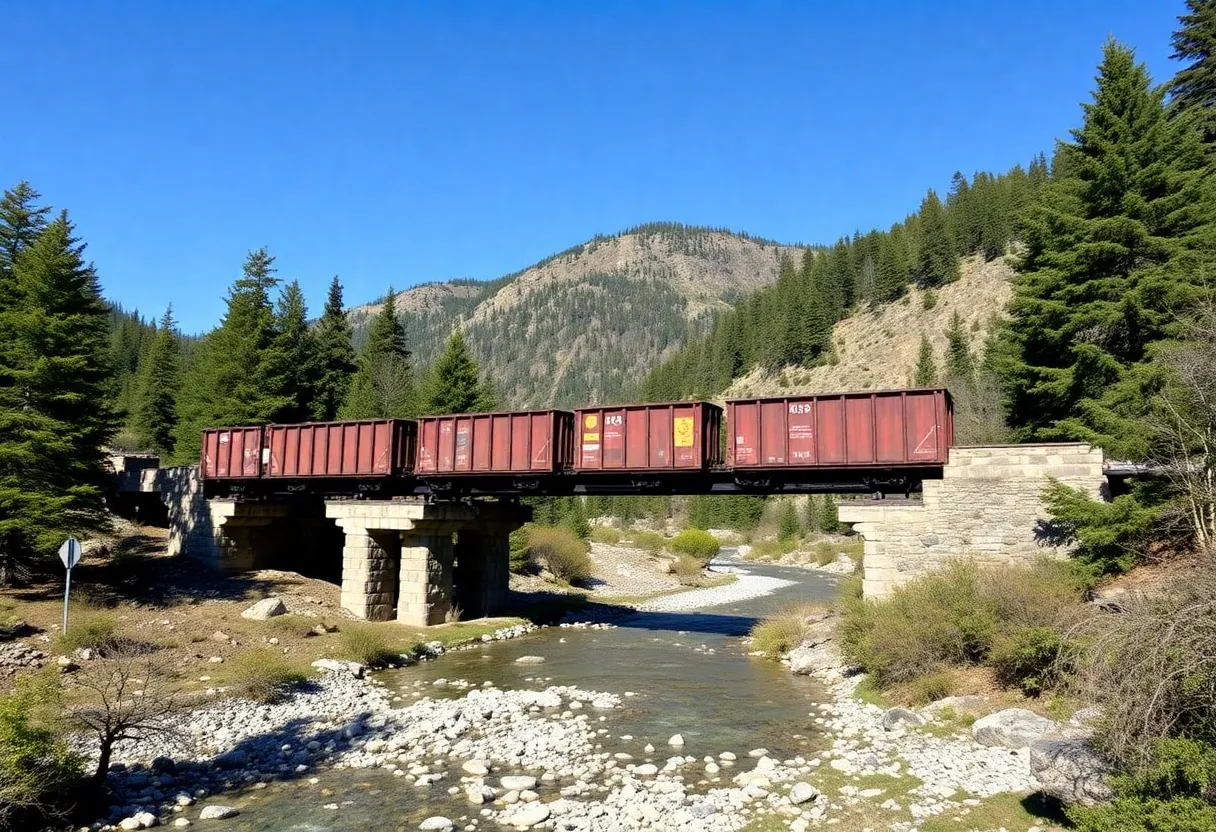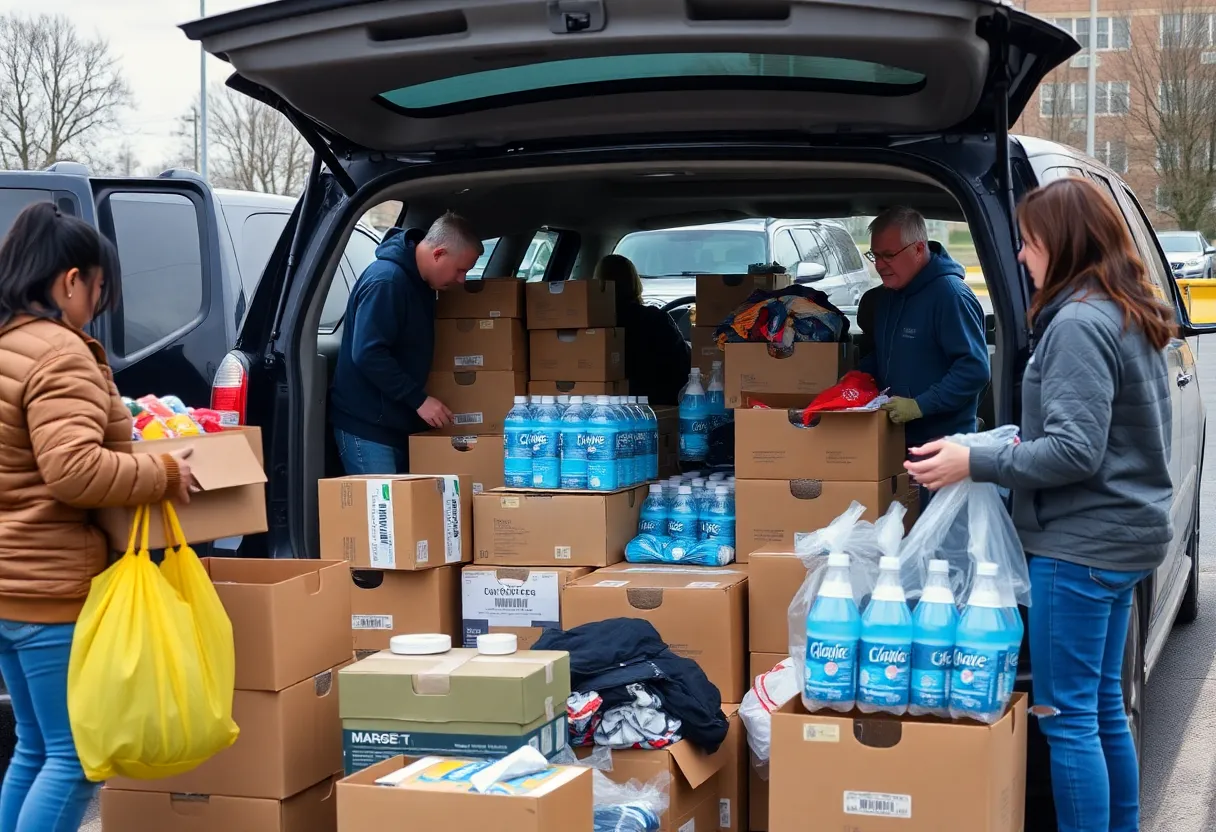News Summary
In Asheville, North Carolina, recovery efforts are underway following Hurricane Helene’s devastation. The community has rapidly replaced the destroyed Hobson Branch Road bridge with a unique structure made from old railroad flatcars, showcasing innovative engineering. This approach not only speeds up the recovery process but also offers a cost-effective solution, with installations completed in just hours. The N.C. Department of Transportation collaborates with the Innovative Bridge Company to address bridge damage across the region, signaling a commitment to rebuilding and sustainable practices even in challenging times.
Asheville Bounces Back with Unique Bridge Solutions Post-Hurricane Helene
Asheville, North Carolina, is steadily rebuilding after the devastation brought on by Hurricane Helene. The once tranquil Ivy Creek transformed into a raging river during the storm, leading to the destruction of the Hobson Branch Road bridge and causing severe damage to the surrounding landscape, including two nearby homes.
The Quick Fix: A New Bridge in Four Months
Just four months after the hurricane, locals can now cross the impressive new bridge that has been installed to replace the old Hobson Branch Road bridge. At first glance, it might look like any standard bridge, but it possesses a unique twist—it’s ingeniously crafted from two old railroad flatcars, each measuring an impressive 90 feet long and 9 feet wide. The new bridge features shiny guardrails and a freshly laid layer of black asphalt, making it not just functional but also visually appealing.
Innovative Solutions for a Pressing Need
The N.C. Department of Transportation (NCDOT) jumped on the opportunity to use these flatcars as building materials while swiftly replacing bridges that were damaged or destroyed by the hurricane. This innovative approach is part of a larger trend; the Innovative Bridge Company, based in Nashville, has already installed a remarkable 40 bridges made from railroad cars for NCDOT since the storm hit.
Efficiency at Its Best
One of the standout features of these flatcar bridges is their speed of installation. Once the necessary supports are in place, a single-span flatcar bridge can be up and functional in only three hours. This rapid response is crucial, especially after flooding from Hurricane Helene damaged over 800 NCDOT bridges across Western North Carolina, with nearly 150 of those declared beyond repair.
Cost-Effective Temporary Solutions
Replacing these bridges is no small task, with estimated costs exceeding $200 million. However, the flatcar bridges provide a more economical solution, costing between $119,000 and $279,000. This price tag is about half the cost of typical temporary bridges, making them an attractive option for emergency replacements.
A Rapid Response to Community Needs
The city’s rapid recovery efforts began when the first post-Hurricane Helene bridge, made from flatcars, was installed in Asheville. The Hardesty Lane bridge was the first casualty washed out by the dreadful waters, which significantly impacted access to a storm debris processing yard. Amidst panic and uncertainty, Innovative Bridge Company provided a temporary bridge within just five days of being contacted by city officials, surprising many who expected longer delays.
A Nod to Relying on History
This innovative use of flatcar bridges isn’t a fresh concept; studies from the 1990s in Canada and the Midwest explored this idea. Innovative Bridge started its journey installing these bridges in Mississippi for farmers, later expanding to help cities and utilities needing quick access solutions after disasters struck.
Looking Forward: A path to Recovery
As of February, Asheville is still under the process of cleanup and recovery from Hurricane Helene, with economic impacts reverberating through the local tourism industry. Although Asheville has long enjoyed a bustling tourism scene, local restaurants and small businesses are still grappling with the storm’s aftereffects. However, other sectors show promise. The Baxter’s manufacturing facility in North Cove has made a noteworthy comeback, returning to pre-hurricane production levels after nearly six months.
Future Plans for Bridge Replacement
Looking ahead, NCDOT has already placed contracts to start replacing private bridges that were also washed out in the storm. They’ve devised a plan to store removed flatcars from these temporary bridges for future use, emphasizing a sustainable approach to bridge building amid changing needs.
With creativity and determination, Asheville is taking significant strides toward recovery, proving that even in the face of adversity, communities can rebuild with innovative and practical solutions.
Deeper Dive: News & Info About This Topic
HERE Resources
Swannanoa River Road Reopens for Traffic in Asheville
Additional Resources
- AOL News
- Britannica: Hurricane Helene
- Fox Carolina
- HealthExec
- My Journal Courier
- Google Search: Hurricane Helene recovery







